
Under the right conditions of saturated brine and heat, salt rapidly forms within minutes into hollow upside-down pyramid ‘boats’. They must be gently skimmed off the surface before they fill with brine and sink. Industrial pyramid (’flake’) salt, or hopper crystals, is hand-harvested and sold as fleur de sel.
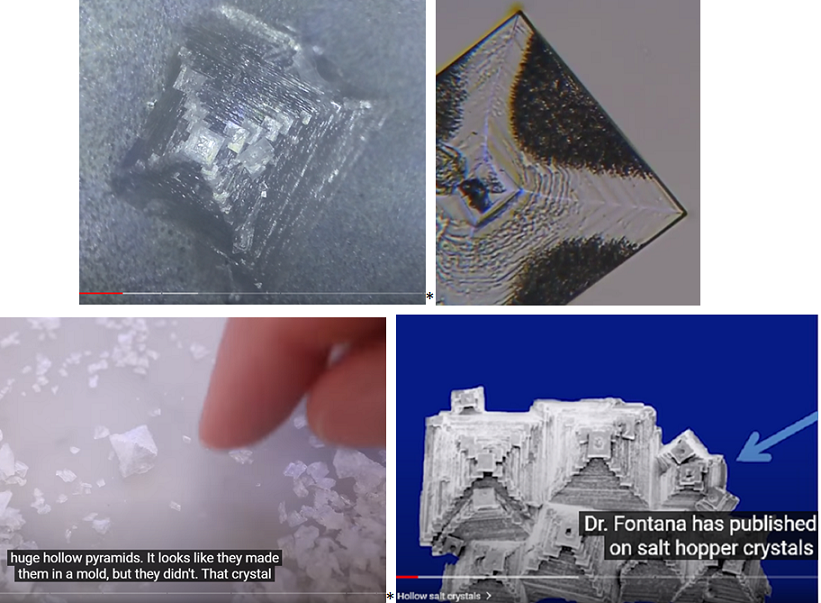
Top and bottom, above on the left are home-made ‘gourmet’ kitchen salts from basic market products. Image sources “Why Salt Crystals Grow as Pyramids (sometimes)” https://www.youtube.com/watch?v=FVEZuzEHwQk and “Gourmet Salt is Crazy Expensive” (Alex, giving a how-to for do it yourself) https://www.youtube.com/watch?v=eN6U58LzyHg
Hopper Growth of Salt Crystals –[2018]– “…We show that the sodium chloride crystals that grow very fast from a highly supersaturated solution form a peculiar form of hopper crystal consisting of a series of connected miniature versions of the original cubic crystal…in [a] cascade… The morphology of such hopper crystals is common to many substances and minerals, such as bismuth, quartz (called skeletal or fenster crystals), gold, calcite, and halite (NaCl)… Sodium chloride is a key factor in many industrial and geological processes, e.g., in the food industry, oil well drilling, CO2 sequestration, erosion of rocks, sodification of soils, and weathering of historical monuments. Equilibrium NaCl crystals are well-known to have a cubic shape because the underlying crystal lattice has a cubic close-packed (CCP) structure; however, both in nature and in laboratory experiments, hopper shapes are often encountered…” https://www.ncbi.nlm.nih.goc/pmc/articles/PMC5994728/
And with a little something added, many more kinds of hoppers can be created –look to the right (below) for another form of salt:

The tendency of a crystal type to form varied and repeatable structures from a basic lattice template is called a “habit” :
What Is Crystal Habit?
“Crystal habit is the tendency for specimens of a mineral to repeatedly grow into characteristic shapes. These shapes are influenced by the atomic structure of the mineral, but they can also be influenced by the environment of crystal growth. Regardless of influence, crystal habit shapes can be characteristic of the mineral and displayed by many specimens of that mineral from diverse locations… habit names are often adjectives that help convey the shape of a crystal or a group of crystals. Bladed, cubic, fibrous, granular, prismatic, and radiating are names of crystal habits that quickly convey a generalized geometric appearance.” https://geology.com/minerals/crystal-habit/
Biologist Rupert Sheldrake, in his banned TEDx talk of 2013, expressed some interesting thoughts about habits:
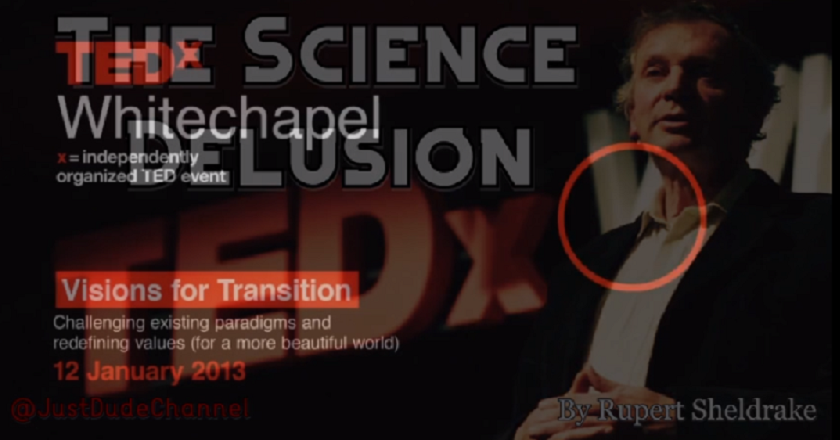
…“In an evolving universe I think a much better idea is the metaphor of habits. I think the habits of nature evolve and the regularities of nature are habitual. This was an idea put forth at the beginning of the 20th century by philosopher C.S. Pearce and…one which I myself have developed into a scientific hypothesis, the hypothesis of Morphic Resonance which is the basis of these evolving habits… Every species has a kind of collective memory. Even crystals do. This theory predicts that if you make a new kind of crystal for the first time, the very first time you make it, it won’t have an existing habit. But once it crystallizes then the next time you make it there’ll be an influence from the first crystals to the second ones all over the world by morphic resonance—it will crystallize a bit easier. The third time there’ll be an influence from the first and second crystals. There is, in fact, good evidence that new compounds get easier to crystallize all around the world, just as this theory would predict. It also predicts that if you you train animals to learn a new trick, for example rats learn a new trick in London, then all around the world rats of the same breed should learn the trick quicker just because rats have learned it [elsewhere] and surprisingly there’s already evidence that this actually happens. And that’s my own hypothesis of Morphic Resonance in a nutshell; Everything depends on evolving habits and not on fixed laws.” https://rumble.com/v3dymyu-the-science-delusion-rupert-sheldrake-banned-tedx-talk.html
The pyramids of Meroe Sudan along the Nile are a good match for the natural varieties of salt hoppers, and even though the large Giza pyramids are ‘too perfect’ by comparison, their angular precision of 52 degrees slope matches English gematria for S-A-L-T (19+1+12+20=52).
Still a wonder…
“The Great Pyramid of Giza is the only Pyramid discovered anywhere on the planet with eight sides… Curiously, this phenomenon is nearly invisible from the ground and can best be appreciated from the air, above the Pyramid but only under proper lighting conditions… [allegedly] at either dawn or sunset on the spring and autumn equinoxes when the sun casts shadows on the Pyramid.” https://curiosmos.com/the-great-pyramid-of-giza-is-the-only-known-eight-sided-pyramid-in-existence/ ; and according to the lore, nobody noticed the indentations until RAF pilot P. Groves overflew the site in 1940.
Geometry alone, however, could tell us that an 8-face square-base pyramid is a common type, suggesting (to me, a non-geometer) at least three modes of measurement; stereographic projection of a sphere on a plane (3D to 2D), octahedral(3D) and octagonal(2D) sectioning, and hypercubes in four-dimensions. In other words, the Great Pyramid is a crystal in space, and as many investigators promote, by measurement, a representation of the Earth.
image source: https://anhngq.wordpress.com/2010/07/11/stereographic-projection/
*
The properties of Giza, though, attracting me the most these days lay in the likeness to salt ever since I observed the appearance of salts in Covid vaccine sample pictures (see Corona the Crow part Four). I’m wondering if and how the great pyramids might also encode chemical –biochemical—information in their complex metrology. The first space crystals that I heard of, literally grown in space aboard the International Space Station, were hoppers of salt made from the astronauts’ own galley supply.
Thousands of crystal types and maybe tens-of-thousands of space crystal experiments have been made in microgravity. Here’s one composite image of protein and virus crystals brought back to Earth.
Image source, Space Safety Magazine 2013
Today, Space Crystals LLC is offering to make space crystals with your DNA and send them to the Moon: “The $150,000 fee covers one DNA kit, DNA processing into a crystalline solution, flight to ISS to grow two crystals, return of one crystal to the customer for safekeeping and transportation of the matching crystal to the moon. (Space Crystals extracts DNA from a strand of a customer’s hair.)” https://spacenews.com/space-crystals/
Kevin Heath CEO, Space Crystals founder will also send cremation remains to space, kinda stardust style. https://www.houstonchronicle.com/news/houston-texas/space/article/Houston-companies-will-send-cremated-remains-17652475.php
Guess who wants a Moon crystal?
“For Shatner, it’s about leaving something on the moon that will last for eternity, Spectrum News reported. ‘I’m going to die, and I’m going to disappear,’ he told a crowd outside the TCL Chinese Theatre July 14 [2023]. ‘What can I do? Here we have the possibility of a type of immortality.’” –because, ya know, Star Trek re-runs just aren’t enough. “When the fully grown crystals return to Earth, one is given to the customer to wear as jewelry…” (–what I was thinking! That and The Family Jewels…) https://www.galvnews.com/business/buzz/biz-buzz-star-treks-shatner-boldly-boosts-brand-of-league-city-startup-popeyes-plans-broadway/article_bac022d4-2ebd-5cea-967b-97a6ff3c599f.html So, ponder the Family Jewels because NASA’s got ‘em through its front company Space Crystals and it’s a whole new ball game.
NASA is looking for The Perfect Crystal, enlisting select schools at the highschool level to participate in its Perfect Crystal mission.
Among the curious, possibly perfect space crystals is the shape-shifting Tobacco Mosaic Virus (TMV) that produces a variety of shape-shifting offspring. Both a-b samples below are called virtovirus, versions of Satellite TMV spun-off from its mother.
The ‘a’ form is shown twice in the collage from Space Safety mag– and ‘b’ reminds me of The Andromeda Strain and its author, Michael Crichton.
Tobacco Mosaic Virus was the first ‘mother’ (solution) ever to be crystallized, winning a 1936 Nobel Prize for its maker Wendall Stanley. It is still said to be the most-studied plant virus in science, and perhaps as Morphic Resonance suggests, evolving.
Because it bears repeating: TMV crystals were grown from conventionally-derived filtrate, the clear liquid end-product from vacuum-pumping a slurry of biological specimens through a porcelain filter. For many decades after the 1890s, “filtrate” and “virus” were synonymous until crystallization took hold and crystals became the new virus and the first nanotechnology, co-evolving with electron microscopes. See “Planting Viruses From Plants” for more TMV story.
In a nutshell, this 29 second video displays the basic growth of perfect crystals in microgravity.
For 3 minutes of your time, see a more sophisticated display of space crystals still suitable for little children. Tell them this is how to make a virus, as Francis Crick said, because “any child can make a virus.”
Unmanned rockets and satellites have been used by the US since the 1960s to grow space crystals, setup as boxed-in automata to be recovered after flight. Details of these projects have been hard to come by but contemporary equivalents are occurring now all over the world. In effect, The Andromeda Strain scenario, referencing Crichton’s 1969 book concerning a crashed satellite and release of its exobiologic content, was plausible in its own time. Crichton, having recently graduated from Harvard Medical with an MD, was then at the Salk Institute in San Diego county on a two-year fellowship (1969-70), “hired” by appearances for his talent writing science fiction—except The Andromeda Strain was his first work of science fiction and first published under his own name. Context within the Salk Institute itself during those two years only adds to the mystery of Crichton’s stay, his phenomenal writer’s success, and future choices of subject matter. Despite his training, Michael Crichton never wanted and never did practice medicine.
The Salk, built atop a bluff overlooking the Pacific on Torrey Pines mesa in La Jolla (‘the Jewel’), was planned in 1958 as a citadel of “metabiology” where raw biologic resources would become transformed into advanced new metamaterials. Joining institutional partnerships on the mesa that included Scripps Oceanographic (under Roger Revelle) and General Atomics (subsid of General Dynamics specializing in nuclear reactors, under Frederic deHoffmann), a new University of California San Diego was built and opened there in 1963, complementing the Life Science/nuclear theme of the consortium. In 1970, Freddy deHoffmann, former assistant to Edward Teller at Los Alamos, joined the board of the Salk and became its longtime president until death by AIDS in 1988. At the hand of Roger Revelle (‘mentor’ to Al Gore Jr.), Scripps can be hailed as the late 1950s birthplace of manmade Global Warming, the climate-change doctrine that Michael Crichton publicly discredited shortly before his untimely death.
Salk Institute partners, sponsors and staff: https://polioforever.wordpress.com/salk-institute/
The satellites…
CORONA, ARGON, and LANYARD “In its May 2, 1946 report, Preliminary Design for an Experimental World Circling Spaceship, the Douglas Aircraft Corporation examined the potential value of satellites for scientific and military purposes… A little less than nine years later, on March 16, 1955, the Air Force issued General Operational Requirement No. 80, officially establishing a high-level requirement for an advanced reconnaissance satellite [with recoverable cargo]… Over the next five years the U.S. reconnaissance satellite program evolved in a variety of ways. The success of the Soviet Union’s Sputnik I and II satellites in the fall of 1957 provided a spur to all U.S. space programs – as any success could be used in the propaganda war with the Soviet Union. In the case of U.S. reconnaissance programs, Sputnik provided a second incentive…[that] increased the pressure on discovering the extent of Soviet capabilities – something that the sporadic U-2 flights could only do in a limited fashion.10 The Air Force program was first designated the Advanced Reconnaissance System (ARS)…” https://nsarchive2.gwu.edu/NSAEBB/NSAEBB13/
In a Twilight Language-like twist of an old story, announcements about SARS-Corona outbreaks brought to my mind the thought of satellites—not just spacecraft, but viruses too—and the transition from ARS to SARS (as in the 2003 outbreaks) and virus-like satellites to Sputniks. The Corona satellites flew from 1959 until May 1972, ejecting their specious payload for mid-air capture by pilots, a remarkably successful strategy as long as the falling packages could be spotted by the cruising airmen. “The [surveillance] goal of the program was not revealed to the public at the time [and]was presented as a program to orbit large satellites to test satellite subsystems and investigate the communication and environmental aspects of placing humans in space, including carrying biological packages for return to Earth from orbit.” https://nssdc.gsfc.nasa.gov/nmc/spacecraft/display.action?id=1959-002A
Historically “biological packages” on space flights are more matter-of-course than exceptions. Supposedly, it all started with fruit flies: “On a July 9, 1946, suborbital V-2 rocket flight, fruit flies became the first living and sentient organisms to go to space, and on February 20, 1947, fruit flies safely returned from a suborbital space flight…” https://en.wikipedia.org/wiki/Fruit_flies_in_space While I’m interested in who provided the specimens and who received them after, the seemingly relevant questions about space crystals during the Corona missions regards the film. The ‘syn-bio’ qualities of photographic film presented a major challenge to the program, as the official line from CIA notes, causing brittle crystallization and halo (corona) effects on exposed material. One can wonder if ‘Corona’ got its name from more than just the polar, pole-to-pole, orientation of its spaceflights. Eastman-Kodak gets the credit as Corona’s film provider but it’s another company at the highest level of government secrecy that had the goods on 3D stereochemistry: Polaroid.
I wrote about Polaroid on this blog (2012) in a post called Morgification, pursuing the fate of a hydrogel substance called polyvinylpyrrolidone, PVP. Then, as now, the pervasive presence of PVP in the human food supply and other consumables has the alarming potential to cause the horrific outcomes (specimen exudates!) of Morgellon’s. Morgification is the prequel to space crystals. https://jenniferlake.wordpress.com/2012/10/24/morgification/ Likewise is the evil twin Borgification: “Borrowing a Star Trek term for ‘techno-sapiens’, borgification looks to be an interim step for human enhancement ..[but]I don’t think it will last long, like 8-track tape or VHS –“new genes” are coming with compact DNA… Document excerpts below were generated out of a conference held by the National Science Foundation, December 3-4 of 2001: The NBIC report [Nano-Bio-Info-Cogno] http://www.forbiddengate.com/NBIC_report.pdf : ‘The integration and synergy of the four technologies (nano-bio-info-cogno) originate from the nanoscale, where the building blocks of matter are established… Convergence of diverse technologies is based on material unity at the nanoscale and on technology integration from that scale…’ ” https://jenniferlake.wordpress.com/2011/04/07/borgification/
__________________________________________________________________
Scaling Up…
The Borg hypercube was introduced to Star Trek fans on May 6, 1989, coincident with the first tangible space crystal successes published by Science magazine. A follow-on Science article for general readers, published in November 1989, is called “Zero Gravity Produces Weighty Improvements”:
“Protein crystals raised in outer space may be inherently superior to their Earth-bred cousins… [A]stronauts on the space shuttle grew protein crystals that were much larger and provided much better structural data than those grown on Earth under identical conditions… The space-grown crystals are already proving their worth. Since their paper was submitted to Science, several of the researchers have obtained new information about the structures of…proteins… The ultimate goal is to understand how other molecules bind to the protein, information that may aid in designing…compounds…” https://www.science.org/doi/10.1126/science.2814485
*
“This paper summarizes the history of this international initiative along with a description of some of the flight hardware systems and crystallization results… It is important to note that crystals grown in space represent not only common proteins useful in crystallization studies, such as canavalin and lysozyme, but other very unique macromolecules as well. These include viruses, DNA, numerous pharmaceutical targets, and a variety of membrane proteins. As additional experiments are carried out in the future, one of the most important objectives will be to determine which classes of macromolecules, and which specific members of those classes will obtain the greatest benefit from crystallization in microgravity.” https://www.ncbi.nlm.nih.gov/pmc/articles/PMC5515504/
—“the most important objectives will be to determine which classes…and which specific members of those classes will obtain the greatest benefit” indeed.
To borg or not to borg…
“The traditional mechanistic view of morphogenesis attempts to explain the formation of organisms in terms of how particles and molecules interact with one another. It also focuses on genes, gene activation and proteins…[but] the mechanistic view doesn’t explain what organizes these components into patterns…encouraging them to continue assembling into yet higher forms… Morphic resonance, on the other hand, is able to explain not only how proteins progressively arrange into higher forms…but also how organisms are greater than the sum of their parts… Taking clues from evidence we will further explore later on in this series, the answer…seems to be that a mysterious creative field—referred to sometimes as the quantum field, zero-point field or source field, and to which we will henceforth refer to as the Field—spontaneously gives rise to these morphic fields. Once they are birthed from the Field, they not only guide the structural formation and activity patterns of various substances and organisms, they are also informed by the various behaviors and environmental patterns of these same substances and organisms… [We] as humans are not only informed by the Field as a whole, but are also somehow informing the Field through our habitual patterns. If this is the case, it would seem that our responsibility to evolve our consciousness cannot be overstated.” https://subtle.energy/morphic-resonance-introduction-biofield-science-part-1/
[disclaimer: use of the phrase “evolve our consciousness” mystifies a normal process of maturation: growing up, gaining insight, discernment, wisdom and ability by experience and self-discipline. A few decades ago the trend in word choice was expanding consciousness, the idea of opening mind to the Field and enlarging one’s perspective. No outcome, value, or moral judgement is implied by either word, only a communicable effect.]
Informing the Field
….from the ISS
Image source “Benefits For Humanity (Growing the LEO Economy)” posted September 2022 https://www.facebook.com/100064698066408/videos/398423385788994/?__so__=watchlist&__rv__=video_home_www_playlist_video_list
Here are two video examples on the corporate ambitions of space manufacturing, currently attaining and aspiring:
“Microgravity Will Change How We Make Everything” ( 3D printing of human organs) https://www.youtube.com/watch?v=fUj1-cPaFgo
“Who wants to be a Trillionaire” (mining asteroids for metals and water) https://www.youtube.com/watch?v=VGosZWBTF7A
______________________________________________________________
Keeping the emphasis of this post on Life Science technology (biophysics and biochemistry), projects spun from the ISS yielding practical ‘benefits’ as of now concern “protein crystal growth (PCG) experiments on the space station [that are]by far the largest single category of experiments conducted on the orbiting lab. Proteins are involved in every aspect of our lives… One of the best ways to analyze a protein structure is to grow it in crystalline form.” https://www.nasa.gov/missions/station/iss-research/creating-new-and-better-drugs-with-protein-crystal-growth-experiments/#hds-sidebar-nav-1
The textbook Turnip Yellow Mosaic Virus is a crystal shape called a truncated icosahedron, a spherical arrangement of hexamers and pentamers comprising 32 faces, otherwise known as a classic carbon-60 [atoms] fullerene.
“Fullerenes [a.k.a. buckyballs] had been predicted for some time, but only after their accidental synthesis in 1985 were they detected in nature[3][4] and outer space… [Harold] Kroto commented: ‘This most exciting breakthrough provides convincing evidence that the buckyball has, as I long suspected, existed since time immemorial in the dark recesses of our galaxy.’[6] According to astronomer Letizia Stanghellini, ‘It’s possible that buckyballs from outer space provided seeds for life on Earth.’ ” https://en.wikipedia.org/wiki/Fullerene
–incidentally, it’s okay nowadays to call viruses fullerenes: [2019 example paper] “Structural basis for fullerene geometry in a human endogenous retrovirus capsid” www.nature.com/articles/s41467-019-13786-y ; and that goes for carbon nanotubes too– from Britannica: “fullerene, any of a series of hollow carbon molecules that form either a closed cage (“buckyballs”) or a cylinder (carbon “nanotubes”)… The elongated cousins of buckyballs, carbon nanotubes, were identified in 1991 by Iijima Sumio of Japan… With fullerenes now available in workable amounts, research on these species expanded to a remarkable degree, and the field of fullerene chemistry was born. The C60 molecule undergoes a wide range of novel chemical reactions. It readily accepts and donates electrons, a behaviour that suggests possible applications in batteries and advanced electronic devices. The molecule readily adds atoms of hydrogen and of the [‘salt-forming’] halogen elements. The halogen atoms can be replaced by other groups, such as phenyl (a ring-shaped hydrocarbon with the formula C6H5 that is derived from benzene), thus opening useful routes to a wide range of novel fullerene derivatives… Particularly interesting in fullerene chemistry are the so-called endohedral species, in which [another type of] atom…is physically trapped inside a fullerene cage…” https://www.britannica.com/science/fullerene
Image, Dr. Anton Zeilinger and model “core-shell” fullerene used in quantum teleportation
University of California professor and space crystal specialist, Alexander McPherson: “Protein crystallization was discovered by chance nearly 200 years ago and was developed in the late nineteenth century as a powerful purification tool, and a demonstration of chemical purity. The crystallization of proteins, nucleic acids, and large biological complexes such as viruses, depends upon the creation of a [‘mother liquor’] solution that is supersaturated in the macromolecule[s]… Supersaturation is produced through the addition of mild precipitating agents such as neutral salts or polymers and by manipulation of various parameters that include temperature, ionic strength and pH. Also important in the crystallization process are factors that can affect the structural state of the macromolecule such as metal ions, inhibitors, cofactors, or other conventional small molecules.” https://link.springer.com/protocol/10.1007/978-1-4939-7000-1_2 ; small molecule ‘seeds’ are conventionally called “atomic clusters” or nanoclusters.
Listen and watch: “Protein Crystallization Over 200 Years: From Art to Science” https://www.youtube.com/watch?v=KtM2v7JAa48&t=211s
“Protein crystallization has been known since 1840…[when it] stimulated the birth of the biocrystallogenesis field… The new nanotechnologies have brought a significant improvement in the practice of protein crystallization… [but] structural biology projects always become more challenging and thereby require adapted methods to enable the growth of the appropriate crystals, notably macromolecular assemblages.” https://febs.onlinelibrary.wiley.com/doi/full/10.1111/febs.12580
[“Advanced Biocrystallogenesis” March 2021] “Nowadays, X-ray crystallography is one of the most popular structural biology methods…[and] several advanced methods for macromolecular crystallization have been developed. Crystallization in capillaries, gels, microfluidic chips, electric and magnetic fields as well as crystallization under microgravity…and crystallization in living cells… [The] seeding strategy has been developed as one of the most powerful [methods]… Another benefit is that it reduces the amount of the used protein and saves time needed for the spontaneous nucleation. This is also suitable for…adding new additives or even new precipitants. Several seeding strategies such as macroseeding and microseeding and/or their modifications can be applied… Additionally, the antibodies and nanobodies are used…to reinforce protein crystallization, mainly for membrane protein co-crystallization. Latterly, nanobodies replaced the use of antibodies because…nanobodies are extremely stable and soluble antibody single-domain fragments that stabilize unstructured proteins by binding to them, form crystal contacts and thus speed up crystal growth…[and] enhance the probability of best quality crystal hits… The formation of native protein crystals in living cells [called in cellulo crystallization]…is ideal for proteins that cannot be crystallized applying basic crystallization techniques… Next…are attempts to use crystals in different non-conventional ways. One of them is sending biosubstances…into space to try to crystallize them for finding new uses… The protein crystals can be supposedly thereafter used for long-term storage or…stabilization…by transferring them into solid state.” https://www.intechopen.com/chapters/76140
Solid state long-term storage—hmm?—shipping, biobanking, think of the possibilities!
______________________________________________________
A question of identity: the triplets below each have a different label. In fact, the first image marked ‘b’ (tobacco-spun virtovirus) is the same photo in McPherson’s lecture (minute7) showing ‘urease.’ The left crystal marked ‘j’ is labeled as apoferritin from this montage source https://www.researchgate.net/figure/An-array-of-crystals-grown-in-the-dewar-device-that-used-liquid-liquid-diffusion-from_fig22_282416059 ; both ‘b’ and ‘j’ photos purport to be space crystals.
Here’s the montage caption: “Figure 14 An array of crystals grown in the dewar device that used liquid–liquid diffusion from frozen biphasic samples. This experiment was performed by American investigators (Koszelak et al.75) on the Russian Space Station Mir. The crystals (labeled by row from left to right) are of top row: (a) rhombohedral canavalin, (b) creatine kinase, (c) lysozyme, (d) beef catalase; middle row: (e) porcine alpha amylase, (f) fungal catalase, (g) myglobin, (h) concanavalin B; and bottom row: (i) thaumatin, (j) apoferritin, (k) satellite tobacco mosaic virus (STMV), (l) hexagonal canavalin.” https://www.ncbi.nlm.nih.gov/pmc/articles/PMC5515504/; a 2015 paper by Alexander McPherson and Lawrence J. DeLucas, America’s first optometrist in space, who authored the image of tobacco-based virtovirus within the same paper.
Using your eyes, do you see that ‘j’ (apoferritin) is the qualitatively oddball photograph? Text within this 2015 paper, called “Microgravity Protein Crystallization” states that “Macromolecules [meaning proteins], being unique in their properties, both in terms of size and complexity, give rise to crystals that are also unique” and leads me to speculate that the images of virtovirus, apoferritin, and possibly urease are one and the same crystal.
What is apoferritin? — “Apoferritin is a protein commonly present in the intestinal mucosa membrane. The important biological function of apoferritin is its ability to bind and store iron, by combining with a ferric hydroxide-phosphate compound to form ferritin. Apoferritin from horse spleen was the first protein cage studied and used as a template for the synthesis of inorganic nanoparticles. Apoferritin has found extensive use in the synthesis of numerous metallic nanoparticles including Pd2+, Cu2+, Fe2+, Co2+, Cr3+, Ni2+, Mn2+, Cd2+, and Zn2+…” [in use as MRI contrast media] https://www.sciencedirect.com/topics/chemistry/apoferritin; “…Apoferritin, the empty shell of ferritin, can be modified to carry tailored properties exploitable for targeted and direct drug delivery. This protein shell has the ability to dis-[assemble] and reassemble depending on the pH value of the liquid environment… [F]erritin…can be exploited for different medical and electronic applications…” https://www.nature.com/articles/s41598-019-53943-3; [2014] “Tuning the band gap of ferritin nanoparticles by co-depositing iron with halides or oxo-anions— Iron-containing ferritin has been used for light harvesting and as a photocatalyst…” https://pubs.rsc.org/en/content/articlelanding/2014/ta/c4ta04588b/unauth
“The optical properties of materials are determined by their electronic structure and band gap. The energy gap between the highest occupied molecular orbital and lowest unoccupied molecular orbital (HOMO/LUMO) varies with the size and composition of a nanocluster. Thus, the optical properties of nanoclusters change. Furthermore, the gaps can be modified by coating the nanoclusters with different ligands or surfactants. It is also possible to design nanoclusters with tailored band gaps and thus tailor optical properties by simply tuning the size and coating layer of the nanocluster.” https://www.ncbi.nlm.nih.gov/pmc/articles/PMC2206983/
[2023]– “Here, a systematic approach is provided to investigate electrochemical behavior, electronic properties, and biodegradation mechanism of cobalt ferrite (CFO) and cobalt-ferrite-bismuth (CFO-BFO) core-shell nanoparticles in apoferritin-containing media… Among various oxide nanomaterials, magnetic oxide nanostructures have been suggested for targeted drug delivery, tissue engineering, magnetic hyperthermia treatment, and magnetic resonance imaging since the magnetic properties can be wirelessly controlled with external magnetic fields…” https://onlinelibrary.wiley.com/doi/full/10.1002/admi.202300558
Aug 2020: “A single immunization with spike-functionalized ferritin vaccines elicits neutralizing antibody responses against SARS-CoV-2 in mice”… “Ferritin is an attractive nanoparticle platform for production of vaccines and ferritin-based vaccines have been investigated in humans…” https://www.biorxiv.org/content/10.1101/2020.08.28.272518v1.full ; 2022 example, an engineered ferritin nanoparticle vaccine for EBV https://www.nih.gov/news-events/news-releases/nih-launches-clinical-trial-epstein-barr-virus-vaccine
….still posting….

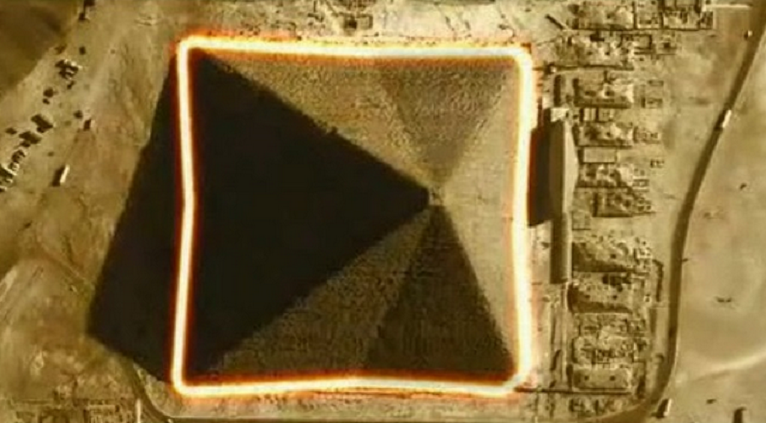
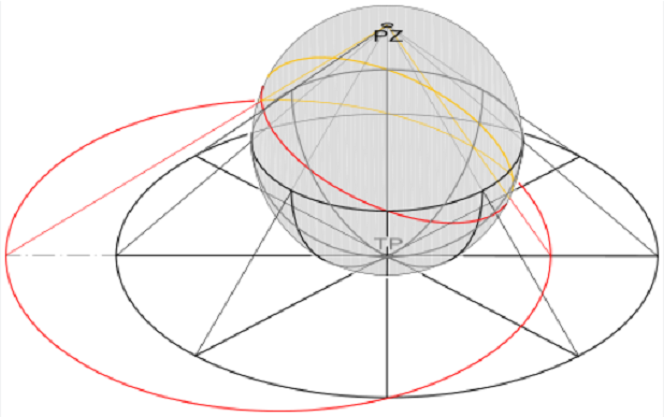

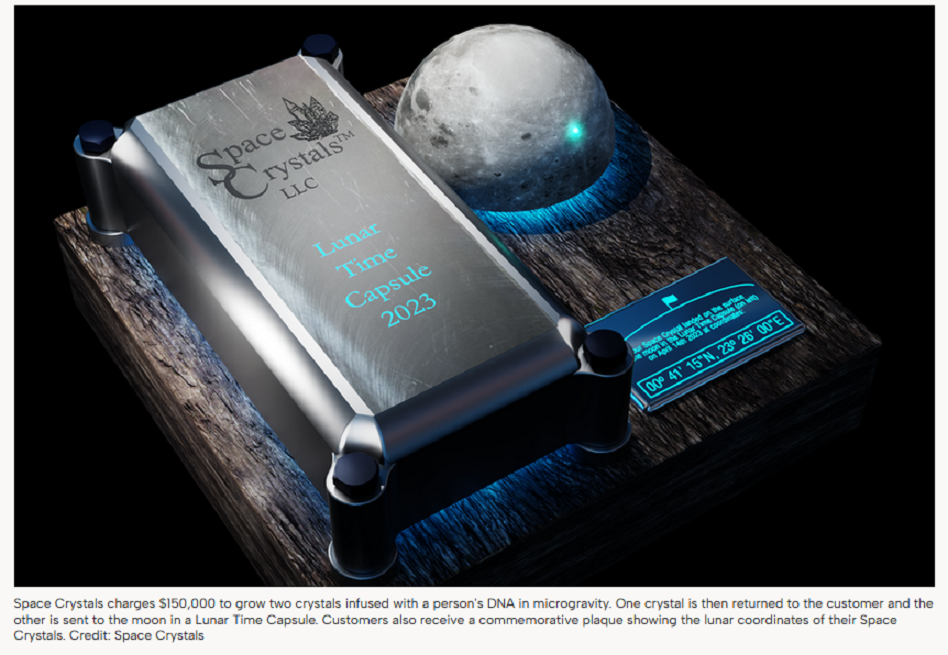
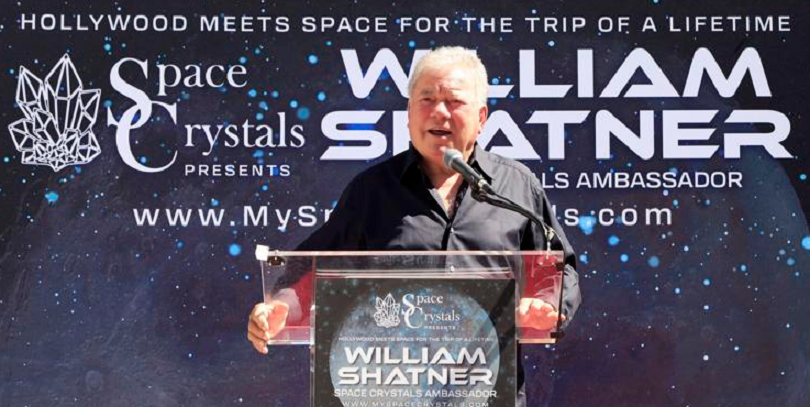
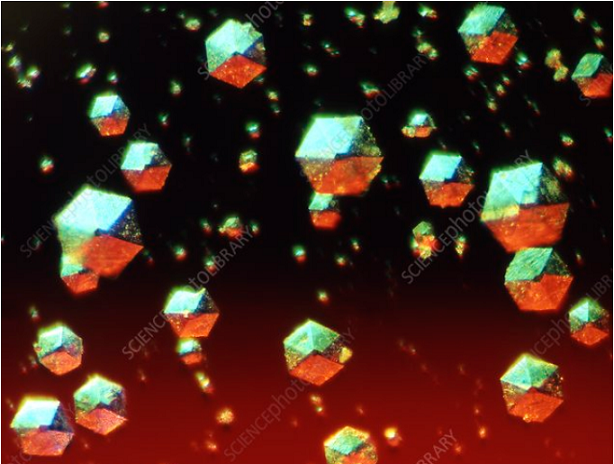

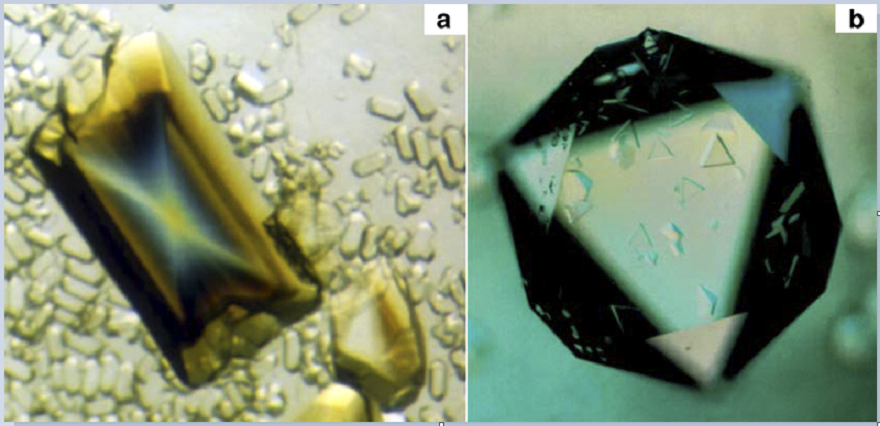
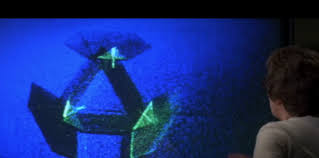
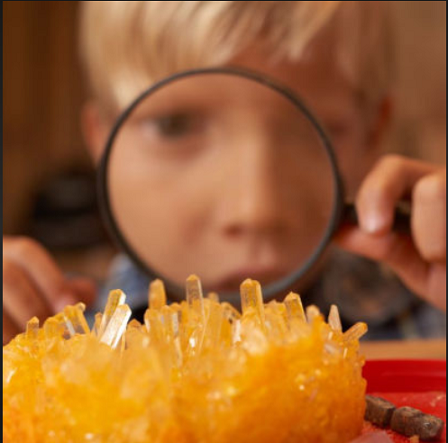
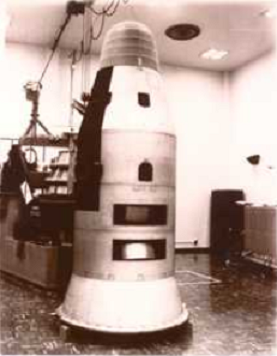








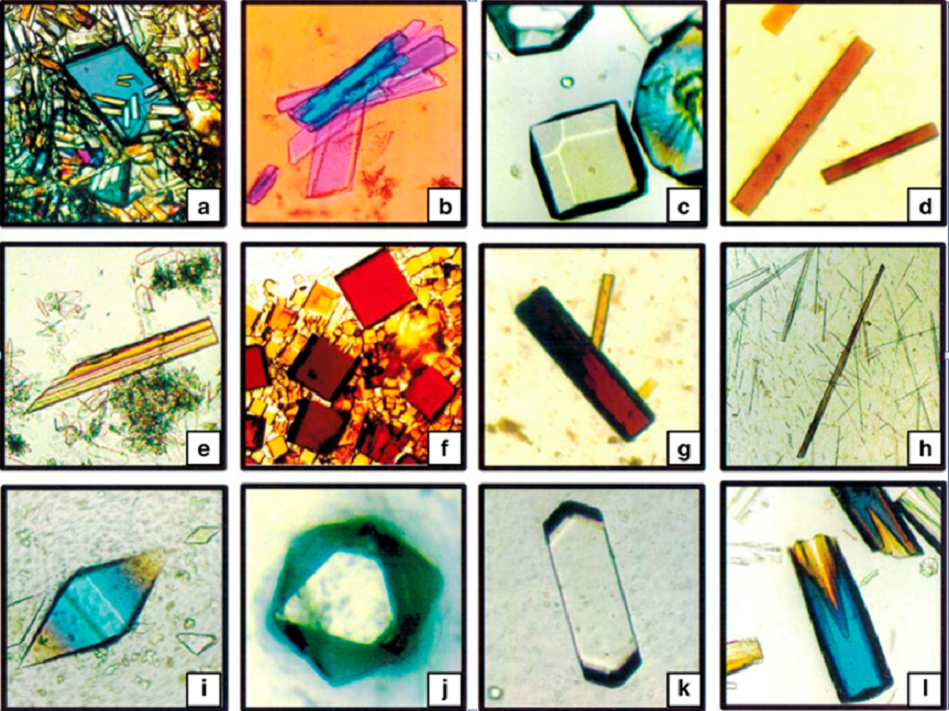
Leave a comment